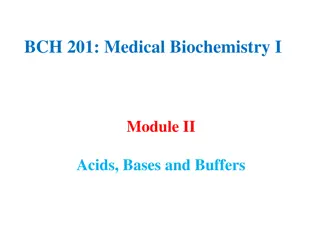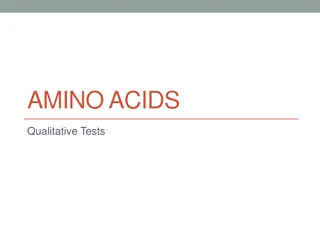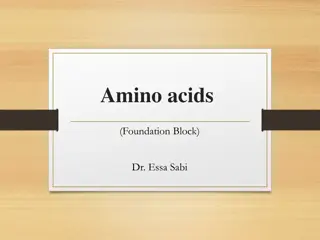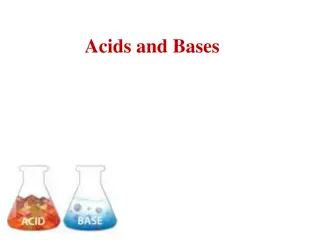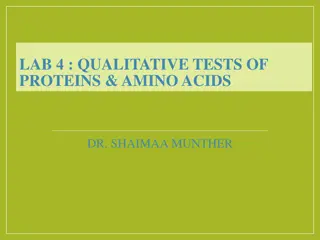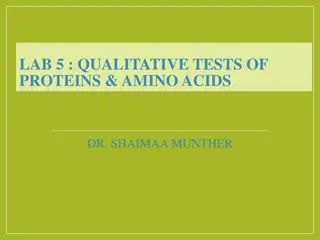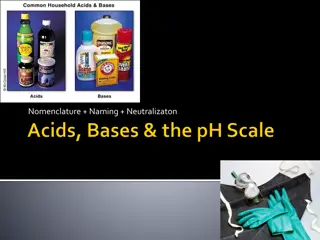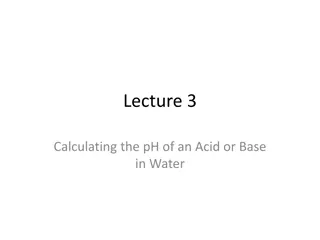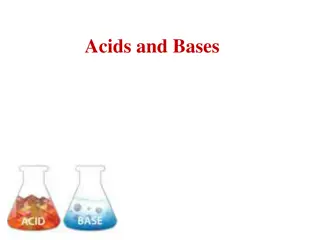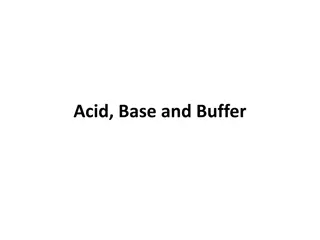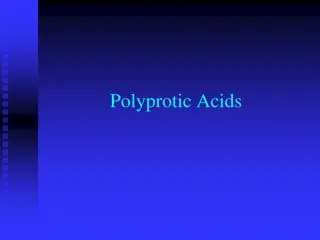Polyprotic Acids in Buffers: Understanding pH Calculations
In this lecture series, explore the concept of polyprotic acids in buffer solutions, focusing on pH calculations, the Henderson-Hasselbalch equation, and distribution of forms at fixed pH levels. Discover the practical applications through examples and detailed explanations.
Download Presentation

Please find below an Image/Link to download the presentation.
The content on the website is provided AS IS for your information and personal use only. It may not be sold, licensed, or shared on other websites without obtaining consent from the author.If you encounter any issues during the download, it is possible that the publisher has removed the file from their server.
You are allowed to download the files provided on this website for personal or commercial use, subject to the condition that they are used lawfully. All files are the property of their respective owners.
The content on the website is provided AS IS for your information and personal use only. It may not be sold, licensed, or shared on other websites without obtaining consent from the author.
E N D
Presentation Transcript
Announcements I AA regrades Won t be ready until Monday I had planned to get feedback to students about how this could affect formal lab (students should still have a copy of spreadsheet and data) Remaining Lab Due Dates Formal Lab Report part B due today Soda Ash due 12/8 IC #2 due 12/8 All Resubmissions due 12/8
Announcements II New Posted Material (Exam 2 key, HW solutions, working on S17 Final key) Final Exam Dec. 11, 10:15-12:15 Will allow you to bring in 1 sheet of notes (8.5 x11 or smaller) with notes 175 points; about half new material New material Starting with relative retention and band broadening in Ch. 23 Ending with Chapter 10 (ran out of time to get to titrations)
Announcements III Today s Lecture Chapter 10 Polyprotic acids used to make buffers Monoprotic and Polyprotic acids in buffer solutions (if time) Review for Final Exam Bonus Point for completing evaluation on new lab: http://baseline.campuslabs.com/csus/siriuslcasfa17 Teaching Evaluations
Chapter 10 Polyprotic Acids Use as Buffers Similar to buffers covered in Chapter 9 With most polyprotic acids where Ka1>> Ka2>> Ka3, the Henderson-Hasselbalch equation can be used with a single pKaselected) The only difficulty can be in deciding which species exist and how to get to those species Example 1: A mixture of 0.010 mol NaH2PO4and 0.045 mol Na2HPO4in 1.00 L solution. Determine the pH Example 2: How many mL of 1.00 M HCl needs to be added to 500 mL of 0.0080 M Na3PO4to get a pH = 6.5 buffer?
Chapter 10 Polyprotic Acids Distribution of forms at fixed pH (e.g. when in a buffer) Let s start with monoprotic acid HA HA H++ A- Fraction present as HA = (HA) = [HA]/[HA]total= [HA]/([HA] + [A-]) Can calculate ratio ([A-]/[HA]) using Henderson- Hasselbalch equation, but other method calculating values is more general Go over method on board (A-) = Ka/([H+] + Ka) (can do derivation yourself)
Chapter 10 Polyprotic Acids On to a diprotic acid H2A From H2A form + 2 [ ] H = H A + + + + 2 [ ] [ ] H K H K K 2 1 1 2 a a a From HA- form From A2- form + [ H ] K H = 1 [ a Notice that denominator is the same + + + + 2 HA [ ] ] H K K K 1 1 2 a a a Can you guess (A2-)?
Chapter 10 Polyprotic Acids Alpha Plot Alpha for H2SO3 1.20E+00 pKa2 1.00E+00 8.00E-01 Alpha Value H2A 6.00E-01 HA- A2- 4.00E-01 2.00E-01 0.00E+00 0 2 4 6 8 10 12 14 pH pKa1
Chapter 10 Polyprotic Acids Example Problems What is the concentration of CO32- if 1.0 x 10-4 moles of CO2 are dissolved into 1.0 L of a buffer at pH = 8.80? (for H2CO3, pKa1 = 6.35, pKa2 = 10.33.)
Final Exam Review of New Topics Chapter 23 How to determine relative retention ( ) from chromatogram and what it is a measure of* How relative retention can be changed How to determine N and H for a column from chromatogram* How to determine resolution from chromatogram* What factors can be adjusted to improve resolution
Final Exam Review of New Topics Chapter 8 Basis for effects of solution ionic strength on equilibrium Calculation of ionic strength* Calculation of activity and activity coefficients* Solution of equilibrium problems including activity* Predict effects of ionic strength on shifting reaction direction Determination of pH (including activity)*
New Topics on Final Exam Chapter 8 Rationale as to why the ICE method can fail Be able to set up solutions to equilibrium problems using steps 1 to 5 of systematic method* Be able to solve simple equilibrium problems (up to 3 unknowns) using systematic method* Qualitative understanding of how secondary reactions affect primary reactions
New Topics on Final Exam Chapter 9 Be able to solve strong acid/strong base problems* Solution of weak acid problem (using ICE method)* Solution of weak base problem (using ICE method)* Determination of fraction of association/dissociation* Knowledge of when ICE method fails Solution of buffer problems (both weak acid/conjugate base and weak acid/strong base or weak base/strong acid types)* Identification of combinations that make a traditional buffer
New Topics on Final Exam Chapter 10 Identification of type (e.g. H2A vs. H2L+ vs. H2L2+) and form (acid, intermediate, or base) of polyprotic acids (including charge on groups) Determination of pH buffer problems involving polyprotic acids* Determination of fractions of acid present in each form (monoprotic to diprotic acids) or concentration of each form when pH is known*



